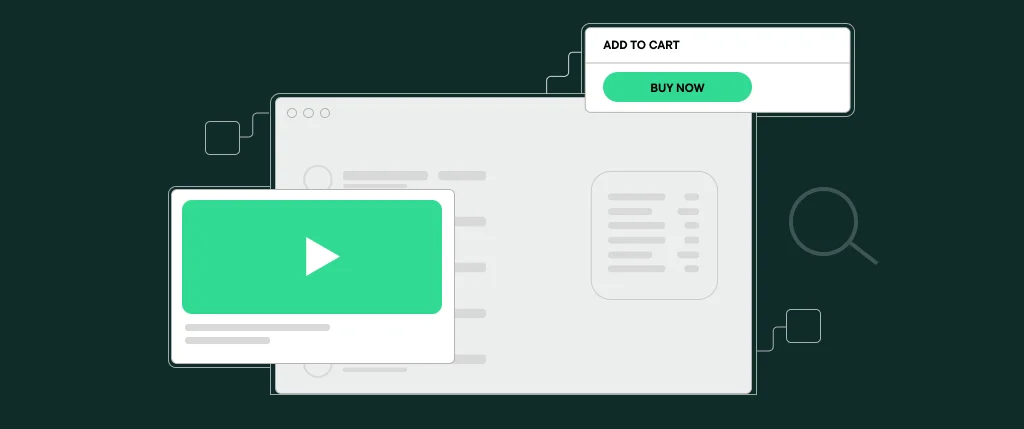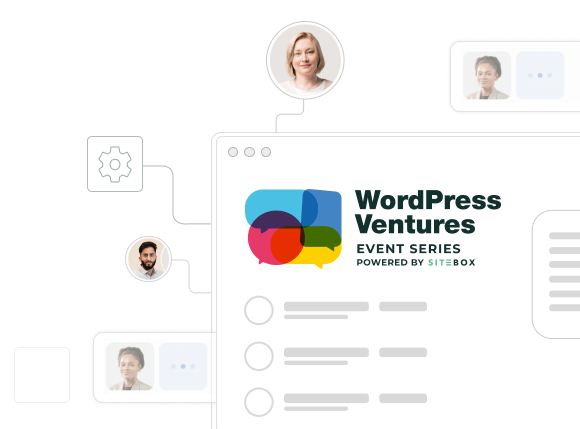As a marketer’s secret weapon for data collection, landing pages deserve some dedication to make them the best they can be.
From crafting inspiring formats to applying subtle UX design considerations, a landing page is a sum of its parts: a powerhouse lead conversion engine that make for an important page of any agency website.
It may sound like a headache to create one, but the appeal of the landing pages is its simplicity. With some know-how and the assistance of multiple WordPress themes and plug-ins, it’s similarly easy to generate leads on your website in no time.
The essence of the landing page
Educating site visitors about a service, a product, or an industry theme make up a large bulk of content pieces in a resource library. Shorter blogs are easy to access, but after investing in larger materials like a brochure, specialist (or technical) white paper or eBook, it’s worth gating the content. This is also true for sign-ups to access an upcoming webinar or a replay of a past event.
If a user is interested, they’ll fill in their details in a form where its landing page acts as the main presentation page. It helps marketers identify the highest performing forms of content, where their users are based and their typical behaviours, all useful data for a future drip campaign to both kickstart and progress their buyer journey.
This all happens by linking landing page forms (powered by WordPress) to a marketers’ email automation machine of choice to send a chain of email updates, download links, reminders, and further personalised content they may enjoy.
Typical components: a building step-by-step
Site visitors demand ease of access. When the main goal of a landing page is to convert a site visitor, they work best to be encouraging – to look great with cool visuals and explain exactly what’s ‘hidden’ behind the form. Decluttered pages are clean, removing the number of confusing options that could cause a site visitor to click away from the page.
The form is pivotal: a sign-up call to action (CTA) that requires the minimal number of requirements a user needs to fill in to access gated content or to show interest in a webinar.
Copy
This should be as to-the-point as possible. A headline that displays the title of the piece of content, webinar or video, and a short blurb explaining the main enticing points a user can gleam from accessing it. For events, key details like date, start time, and speaker information should also be obvious.
Featured images
While not always necessary, boldness from a featured image can drive a user’s attention or illustrate more of they can expect from the landing page’s gated content. It can also break up lines of text. Images of keynote speakers for webinars adds a personal touch. Cluttering a landing page with many images could derive focus from the sign-up form, so simple layouts with choice images is more powerful.
Lead form
It wouldn’t be a landing page without one! The placement of the lead form is optional, but aligning it right or left makes it stand out. Striking colour schemes and copy instructions can sway a user’s decision to sign up, but liming the number of fields to all that’s necessary (including any disclaimers of data privacy) maintains the form’s ease-of-use. Forms from WordPress can be integrated with email marketing automation platforms.
Call to actions
A form is all well and good, but it needs a button to drive a user to submit details or the download the gated content (which could link to another landing page, if necessary). Great calls to action should be clear and accessible from a design of view; colour choice, size, and use of negative space can make buttons appear more click worthy, with short instructional copy being most effective.
Tips and tricks for WordPress
The beauty of landing pages is that, when designed with UX in mind for the first time, it’s usability can be repeated again and again. WordPress builders, including Elementor, allow users to develop landing page templates with ease. With many users looking to see webpages on mobile, plugins including SeedProd are available through such builders to make any landing page responsive to maintain the same great user interface on a phone screen as on a browser window.
Elementor is focused on block components that utilise drag and drop functionality. It makes it straightforward for content editors to play around with the page format however they wish for a template, with only the body copy and images needing to be changed for whatever content the landing page is promoting.
Of course, getting as many eyes as possible on a downloadable piece of content means optimising a landing page for search engines. This relies on page load speed, which can be slowed by high-res images and outdated plugins and code. Using repeated keywords throughout the page copy, metadata (tags, categories) and implementing easy navigation to and from the landing page through homepage floating banners, social posts and email links all improves UX and page performance.
Tracking the number of form sign-ups is ideal for marketers to gauge the level of engagement with content. A/B testing for individual landing pages (where each version has elements added, taken away or rearranged) can see whether positioning certain CTAs get more user interactions.
WordPress plugins also allow for advanced data analytics to discover URL referrals and user details for future marketing campaigns.
Get started today!
After the great effort made to educate potential site visitors, the landing page is the humble tool to promote it, capture interested users, scale, and drive things forward. WordPress provides useful ways to maximise their potential and to understand how better customer conversion can be achieved.
Through simple web builders, and some handy UX design considerations, landing pages and their gated content play a huge part for an agency to achieve growth. To learn more, speak to a member of the SiteBox team!



